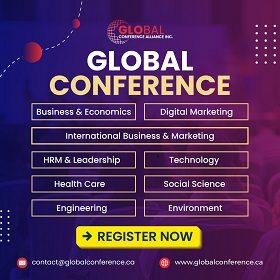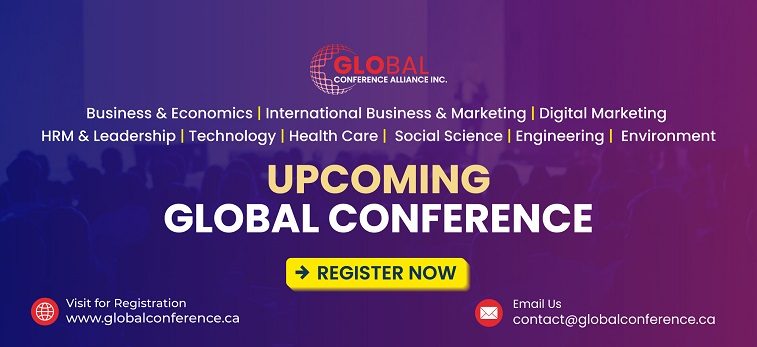Writing a computer engineering conference paper can feel like a big task, especially if it’s your first time. These papers are shared at major events where experts talk about new ideas, systems, or solutions. If you’re wondering how to get started, you might be asking yourself how to write a computer engineering conference paper.
Write a computer engineering paper by choosing a focused topic, doing detailed research, and using examples or diagrams to explain. Follow formatting rules, review your draft carefully, and submit on time. Clear writing and simple ideas make the best papers.
Do you want to know how to pick the right topic, plan each section, and avoid common mistakes? If yes, then keep reading—this article has all the important steps and tips you need to write a successful computer engineering conference paper.
How to Write a Computer Engineering Conference Paper?
Computer engineering conference papers can feel challenging at first. Taking it step by step makes the process easier to handle. Stay focused, keep your ideas clear, and follow a few simple tips. The guide below walks you through the right approach.
Pick a Clear Topic
You should begin with one strong and easy-to-understand topic or idea. Try not to cover too many things in one paper, or it may confuse people. A focused topic is easier to explain and also more interesting to read. If you pick something too big, it’s harder to finish the paper. A simple idea, well explained, is better than a big idea. Think of something you enjoy or know well enough to explain.
Do Some Research
Before writing anything, take time to read what others have already shared. You don’t want to repeat things or write what’s already known. Find useful facts from books, websites, and trusted articles online. Good research helps you write something better and more complete. You can also spot gaps where your ideas can fit nicely. Research builds your base and gives your paper a strong start.
Plan the Paper First
Instead of jumping right in, create a simple outline for the paper. This outline shows what each part of your paper will talk about. It helps you stay organized and not forget anything important later. Make small notes under each section to remember your points. Planning saves time and makes the writing part much smoother. It’s like having a map before going on a trip.
Write the Introduction
The introduction should quickly explain what your paper is going to be about. Try to say why this topic matters or what makes it special. You don’t need to go deep, just spark some interest in the reader. Say enough to give an idea, but save details for later. The goal is to make people want to read more of your paper. Keep the words easy and short.
Explain With Examples
Every time you say something, try to back it up with examples. A simple example can help people understand what you really mean. If something is hard, examples can make it feel less confusing. You can make up your own easy examples to show your point better. This also helps people remember what you said. Examples are like small stories that explain your ideas more clearly.
Add Simple Diagrams
Sometimes, pictures can explain things better than lots of words can. A basic block diagram or flowchart can show how something works step by step. Don’t make it too messy or full of arrows. Keep it clear with good labels so others can follow easily. Diagrams help readers understand faster without feeling lost in long paragraphs. Use them only when they add value to your paper.
Check Paper Rules
Before you send your paper, check the rules set by the conference. Rules often include paper size, format, fonts, and how to add sources. If you’re preparing events, especially for global events like conferences in USA, Canada, UAE, or any other country, these rules change often. Following these details shows that you are serious about your work. Even small mistakes in format can get your paper rejected right away.
Read and Fix
After you finish writing, wait a bit and read the paper again. You’ll often find small mistakes or things that sound unclear or messy. Fixing these problems makes your paper better and easier to understand. It’s smart to ask someone else to read it too. If they understand it easily, others will too. A final check is always worth the time and effort.
Submit and Wait
Once you’re happy with the paper, send it before the deadline comes. Make sure you filled everything right, including your name and other details. After that, just wait for the reply from the event team. Even if it’s not accepted, don’t feel bad about trying. You can learn from the feedback and do better next time.
Writing a paper gets easier if you follow each step with care. Stay simple, stay clear, and don’t try to make it too fancy. Just focus on one good idea and explain it well with examples. If you do that, your paper can make a great impression.
What Are the Key Components of a Computer Engineering Conference Paper?
Writing a computer engineering conference paper may seem like a big task. But when you break it down into small parts, it becomes easier to manage. Every paper has some key sections that help explain things clearly. Let’s look at those important parts now.
Abstract Overview
This is the first part people read, and it gives a quick look at the paper. It tells what the paper is about in just a few lines. It should be short but clear, sharing the main idea of your work. People read it to decide if they want to read more. A good abstract helps the reader understand the paper without going into all the details.
Intro Section
Background information helps explain your topic and why it matters. It also points out the problem you’re focusing on and what the paper will show. Keep the language simple and avoid making it too long. Just share enough to help the reader understand what’s coming. A clear introduction makes people want to keep reading.
Method Used
You need to write about how you did the work or project here. It could be a system, a setup, or a small experiment. You should explain the steps clearly so others can understand or try it too. Don’t make it too technical. Just explain what you used and what you did in simple words. This part tells how you reached your results.
Results Shared
In this part, talk about what happened after your method was used. You can show numbers, tables, or even small diagrams. Be honest about what worked and what didn’t. Try to keep things clear so anyone can understand what you found. You’re not guessing here; you’re showing what really happened from your project or idea.
Final Parts
This section includes the discussion, conclusion, and list of references. Discussion means talking more about what your results mean. The conclusion gives a short ending of what you learned. References are the links or names of books and papers you read while working. These parts help finish the paper in a clear and neat way without missing anything important.
Each part of the paper has a job, and together they make the whole thing work well. When you follow this structure, your paper becomes easier to write and easier to understand. Just take it one part at a time and keep things simple.
How to Choose the Right Topic for a Computer Engineering Conference Paper?
Finding the right topic for a computer engineering paper doesn’t have to feel confusing. Many great ideas start from small questions or daily problems. The best topics usually come from things people are already curious about. Take a look below to discover how to spot a strong one.
Look at Recent Trends
New tools, systems, or tech updates often lead to great paper ideas. You can follow tech blogs, news, or even social media to see what people are talking about. These hot topics can give you clues about what’s important right now. Just make sure your topic is not too common or has already been explained many times. Something fresh but still easy to understand works best for conference papers.
Solve a Small Problem
Most strong topics come from solving simple but real problems. Think about things that don’t work well or can be improved with a small idea. These small issues are easier to explain and often matter to many people. Even a basic improvement on a known system can make a good paper. Your goal is to show a clear and helpful idea without making things too big or complex.
Check What’s Missing
Sometimes, good ideas come from spotting what others forgot to mention. You can read old papers and see if something feels incomplete or unclear. That gap can be the starting point for your own topic. Try to build on what’s already there, but give it your own twist. A missing detail in past work could lead to a fresh and useful topic to write about.
Mix Ideas Together
A clever way to find a topic is by mixing two different ideas. For example, take a feature from one system and use it in another place. This type of mix often leads to something new and smart. It helps your topic feel fresh without being too hard. When you’re in the early stages of selecting a compelling paper topic for a computer engineering conference, it’s important to balance innovation with feasibility—making sure your idea is both fresh and well-supported by current research trends.
Ask Simple Questions
Sometimes, just asking “why” or “how” can lead to a great topic. Start with something small that interests you and ask what can be done better. Those basic questions often lead to ideas worth writing about. Don’t wait for a perfect topic to pop up. Keep asking simple things, and one of them might just lead to the right subject for your paper.
Choosing a topic doesn’t mean picking the most popular or complex idea. It means finding something you understand well and can explain clearly. Keep your idea fresh, useful, and not too hard to work on. Simple topics often work best.
How to Structure the Abstract and Introduction for Maximum Impact in a Computer Engineering Conference Paper?
When writing a computer engineering conference paper, the abstract and introduction are crucial for grabbing the attention of reviewers and setting the stage for your work. Here’s how to structure them for maximum impact, along with tips for compelling writing:
Structuring the Abstract
The abstract is a concise summary of your entire paper and should be able to stand alone. Aim for 150-250 words, depending on conference guidelines.
Sentence 1: Background/Problem Statement (1-2 sentences)
- Start by broadly introducing the field or problem your research addresses.
- Clearly articulate the existing challenge, gap, or limitation in the current state-of-the-art that your work aims to solve.
- Example: “The escalating demand for high-performance computing in edge devices faces significant power consumption constraints, limiting widespread deployment of complex AI models.”
Sentence 2: Your Solution/Approach (1-2 sentences)
- Briefly introduce your proposed solution or novel approach. What did you do?
- Avoid excessive technical jargon here; keep it accessible.
- Example: “This paper proposes a novel hardware-software co-design framework that dynamically optimizes neural network precision for energy-efficient inference on resource-constrained embedded systems.”
Sentence 3: Key Results/Findings (2-3 sentences)
- Quantify your most significant results. Use numbers and percentages where possible.
- Highlight the most impactful outcomes of your research.
- Example: “Our framework achieves up to 45% energy reduction and 30% latency improvement compared to state-of-the-art fixed-precision approaches, with negligible accuracy degradation (less than 1%).”
Sentence 4: Conclusion/Implications (1 sentence)
- State the broader impact or significance of your work. Why does it matter?
- What are the implications for the field?
- Example: “These findings demonstrate a viable path towards deploying sophisticated AI applications in highly power-sensitive environments, enabling new possibilities for ubiquitous smart technologies.”
Structuring the Introduction
The introduction provides more context and depth than the abstract, leading the reader through the motivation, problem, your solution, and the paper’s organization. Aim for 1-2 pages, depending on the paper length.
Section 1: Background and Motivation (Broad to Specific)
- General Domain Introduction: Start with a broad overview of the field your paper belongs to. Why is this area important? What are its current trends or challenges?
- Example: “The rapid advancements in artificial intelligence, particularly deep learning, have revolutionized various domains, from computer vision to natural language processing.”
- Problem Context: Narrow down to the specific problem or gap you are addressing. Explain why this problem is significant and what the limitations of existing solutions are. This is where you establish the “hook.”
- Example: “However, the computational and memory demands of deep neural networks often exceed the capabilities of resource-constrained embedded devices, hindering their widespread deployment in edge computing scenarios. Existing optimization techniques, such as model compression or quantization, often involve trade-offs between performance and accuracy, and typically lack dynamic adaptability to varying operational conditions.”
- Why this Problem is Hard/Important: Elaborate on the challenges inherent in the problem. What makes it difficult to solve? This reinforces the need for your solution.
- Example: “Achieving high accuracy while simultaneously optimizing for energy efficiency and latency on diverse embedded hardware platforms presents a formidable challenge, requiring intricate hardware-software co-optimization and adaptive mechanisms.”
Section 2: Your Contribution and Solution Overview
-
- State Your Contributions Clearly: Explicitly list your novel contributions. Use bullet points or numbered lists for clarity. This is the heart of your introduction.
- Example:
-
-
- “A novel dynamic precision scaling framework that adapts neural network quantization levels based on real-time power and performance constraints.”
- “A hardware-aware co-design methodology for generating optimized inference engines for diverse edge computing platforms.”
- “Extensive experimental validation on a suite of popular neural networks and embedded hardware, demonstrating significant improvements in energy efficiency and latency.”
-
- Briefly Describe Your Approach: Give a high-level overview of how you address the problem and achieve your contributions. Don’t go into excessive detail, but provide enough information for the reader to understand the essence of your solution.
- Example: “Our approach leverages a reinforcement learning agent to dynamically determine optimal bitwidths for different layers of a neural network, coupled with a custom hardware accelerator capable of executing variable-precision operations efficiently.”
Section 3: Related Work (Briefly, if Space Allows, or as a Dedicated Section)
Acknowledge and Differentiate: Briefly mention key related work, highlighting how your work differs from and improves upon existing solutions. This establishes your paper’s novelty.
- Example: “While prior works have explored static quantization and hardware-accelerated inference, our work uniquely combines dynamic precision adaptation with a holistic hardware-software co-design to achieve unprecedented levels of energy-performance trade-offs.” (Note: A more detailed related work section will typically follow the introduction.)
Section 4: Paper Organization
Roadmap for the Reader: Briefly outline the structure of the rest of the paper. This helps readers navigate your arguments.
- Example: “The remainder of this paper is organized as follows: Section 2 discusses the background on neural network quantization and edge computing. Section 3 details our proposed dynamic precision scaling framework. Section 4 describes our hardware-software co-design methodology. Section 5 presents our experimental setup and results. Finally, Section 6 concludes the paper and outlines future work.”
By following these guidelines, you can craft an abstract and introduction that effectively communicates the value of your computer engineering research, captivates reviewers, and sets your paper up for success.
Tips for Writing a Clear and Concise Methodology Section in Computer Engineering Conference Papers
Writing the methodology section in a computer engineering paper can seem tricky at first. But really, it’s just about clearly explaining what you did during your project. You want others to understand it easily and be able to repeat it without confusion. Keep reading to learn how to make your steps simple, clear, and easy to follow!
- Be Step-by-Step Clear: Break everything into simple steps, like a recipe. Mention every action you took in the order you did it.
- List Tools and Software Used: Say what programs, hardware, or platforms you used, and include their version numbers so others can use the exact ones.
- Mention Settings and Configurations: Tell what settings or configurations you used in your tools. This helps others run things exactly how you did.
- Include the Programming Languages: Let readers know what programming languages you used, and also mention if any special libraries or frameworks were needed.
- Explain Any Algorithms or Techniques: If you used a known algorithm, name it. If it’s your own, explain how it works clearly and simply.
- Say Where You Ran the Tests: Tell what kind of computer or environment you used, like Windows, Linux, or cloud services like AWS or Google Cloud.
- Note Any Problems and Fixes: If you faced issues during your work, share them and how you fixed them. It can help others avoid the same trouble.
Clear and simple methods make your work stronger and more trustworthy. Others will thank you when they can follow your steps without guessing. That’s a big part of good research writing. So take your time and make this section shine!
How to Present Data and Results in Computer Engineering Conference Papers?
Presenting data and results in computer engineering papers is a big part of showing what your work has achieved. It’s not just about numbers—it’s about helping others understand them easily. Good visuals and simple words make a big difference. If you want to learn how to do that well, keep reading!
Use of Charts
Charts help show trends, changes, or comparisons quickly. Line charts are great for showing progress over time, while bar charts work well for comparing things side by side. Always label your axes clearly so people know what they’re looking at. Keep colors simple and avoid too many lines or bars in one chart. Try to keep the chart clean and easy to read.
Making Good Tables
Tables are helpful when you have exact numbers to show. Keep the layout simple and don’t pack too much into one table. Use headers for each column so readers know what the numbers mean. If some numbers stand out, highlight them using bold text. Make sure the table is not too wide, so it fits well on the page without cutting off data.
Adding Helpful Figures
Figures can include images, diagrams, or block designs. Use them to show how systems or processes work. Add a short caption to explain what the figure shows. Always place the figure close to the text where it’s talked about. Make sure it’s clear, not blurry, and keep extra details out that don’t help your point.
Writing with Data
After showing your data in visuals or tables, explain what it means in simple words. Don’t just repeat the numbers—talk about what they show. For example, mention if one method worked better than the other. Keep it clear and avoid using too many numbers in one sentence. Help the reader understand the “why” behind the data.
Keeping Things Clear
Always make sure everything is easy to follow. Use the same colors, fonts, and styles across your charts and tables. Don’t switch styles too often—it can be confusing. Use bullet points if needed to list results clearly. If something is very important, say it in both the chart and the text. Clear and simple always wins over fancy and messy.
Presenting your results in a clear way helps people understand your work better and faster. Good visuals, simple writing, and neat layouts make your paper stronger. The easier it is to read, the more powerful it becomes.
Common Mistakes to Avoid When Writing a Computer Engineering Conference Paper
Writing a computer engineering conference paper might sound tricky at first, but it becomes easier once you know what to avoid. Many people make small mistakes that can hurt their paper. Let’s explore some common ones.
- Using Complex Language: Try not to use too many big or technical words. Simple and clear sentences help readers understand your points without getting confused.
- Forgetting to Add Citations: Always mention where you got your information from. Giving credit to the right sources makes your paper trustworthy and reliable.
- Poor Formatting: A messy layout can make your paper hard to read. Follow the format rules given by the conference to keep everything neat and clear.
- Unclear Conclusion: Ending the paper without a strong message leaves readers confused. Make sure your conclusion clearly sums up the main ideas you discussed.
- Too Much Unnecessary Detail: Including too many side facts or long explanations can distract readers. Stay focused on your main topic throughout the paper.
- Weak Introduction: If the beginning is boring or unclear, readers may lose interest quickly. Make sure the start of your paper explains what it’s about.
- Skipping Proofreading: Small grammar or spelling mistakes can lower the paper’s quality. Always check your work more than once before submitting it.
Avoiding these common pitfalls not only saves time during revisions but also plays a key role in improving the quality of a computer engineering research paper, especially when aiming for acceptance at competitive conferences.
Formatting and Citation Styles for Computer Engineering Conferences Paper
When writing a computer engineering conference paper, using the correct formatting and citation style is very important. Different conferences follow different rules, so knowing the common ones can save you from confusion and mistakes.
| Details | IEEE | ACM | APA | Chicago |
| Full Form | Institute of Electrical and Electronics Engineers | Association for Computing Machinery | American Psychological Association | Chicago Manual of Style |
| Used By | IEEE Conferences | ACM Conferences | Some engineering journals | Some university conferences |
| Font & Size | Times New Roman, 10 pt | Arial or Helvetica, 9 pt | Times New Roman, 12 pt | Times New Roman, 12 pt |
| Citation Style | Numbered in square brackets [1] | Numbered or author-year (varies) | Author-year (Author, Year) | Author-date or footnote |
| Reference Format | [1] A. Author, “Title,” Journal, year. | [1] A. Author. Year. Title. Conference name. | Author, A. (Year). Title. Source. | Author, First. Title. Place: Publisher, Year. |
Always read the paper guidelines given by the conference before starting. Even small changes in font, size, or citation format can affect your paper’s acceptance and overall presentation
Should You Collaborate on Your Computer Engineering Conference Paper?
Collaborating on a computer engineering paper can sound exciting, especially when you’re working with someone who shares the same interest. But is it always a good idea? Well, there are things to think about before deciding. Let’s look deeper.
Sharing the Work
Working with someone means you don’t have to do everything alone. You can split tasks like writing, researching, or designing experiments. This saves time and makes things easier. But it’s important to stay clear about who does what so no one feels stuck doing all the work.
Learning From Others
One big benefit of teamwork is learning from each other. You might be good at coding, and your partner might be great at writing. When you combine your skills, the paper becomes stronger. It also helps you improve in areas where you’re not very confident yet.
Different Ideas
More people often means more ideas. A co-author might think of something you didn’t consider. That can help your paper become more creative and interesting. Still, if you both have different views, you need to listen, discuss, and agree without arguing too much.
Time and Effort
Working together sounds fun, but it also takes planning. You both need to find time to meet, talk, and share updates. If one person is late or doesn’t do their part, it slows everything down. So, teamwork only works well when both people stay active.
Credit and Recognition
When a paper is published, both names go on it. That sounds fair, but only if both helped equally. Problems can happen if one person does much more but still shares the same credit. So always talk early about how you’ll share the work and the credit.
Working with someone on a paper can make things easier and more fun. You get to share ideas, learn new things, and finish faster. But it only works well if both people stay honest and do their part. Good teamwork can turn a simple paper into something great.
Commonly Asked Questions
If you’re writing a computer engineering conference paper for the first time, it’s normal to have questions. Many students wonder about how to handle certain parts of the process that aren’t always explained clearly. These FAQs cover extra tips and common doubts that can help you write a stronger, clearer paper. Take a look below to learn more in a simple and helpful way.
How Do I Know If My Idea Is Good Enough for a Paper?
A good idea is one that solves a real problem or answers a useful question. You don’t need a huge invention—small improvements can make great papers. If your idea is clear, new, and easy to test or explain, it’s probably good enough. Try talking about it with a friend or teacher to see if they find it interesting too.
What If I’m Not Very Good at Writing in English?
That’s okay—many people feel the same way. Start by writing simple sentences to share your ideas clearly. Use grammar tools or ask a friend or teacher to help you fix mistakes. As long as your ideas are strong and easy to understand, perfect English is not the most important thing.
Can I Use Information From YouTube or Blogs in My Paper?
It’s better to use trusted sources like journals, books, or official websites. YouTube or blogs may not always be correct or checked by experts. If you use them, make sure they are from known people or companies and add a proper reference. Always double-check the facts before adding them.
How Long Should My Conference Paper Be?
Each conference has its own length rules, but most papers are 4 to 6 pages. Try not to make your paper too short or too long. If it’s too short, it may miss important details. If it’s too long, it can be hard to read and may be rejected.
What If I Don’t Have Real Data for My Paper?
If you don’t have real data, you can make a small test or use fake (simulated) data just to explain your idea. Say clearly in your paper that the data is not real. Try to explain how the idea would work in real life. It’s better to use real data, but good examples are okay for early ideas.
How Can I Keep My Paper Interesting to Read?
Use short sentences, clear points, and good examples to help readers stay interested. Avoid long paragraphs that are hard to follow. Add small diagrams or pictures if they help explain better. If you explain things like you’re teaching someone new, it becomes easier and more fun to read.
Is It Okay to Use AI Tools Like ChatGPT to Help Write?
Yes, you can use AI tools to help with ideas or improve your writing. But you should still understand everything in your paper and make the final edits yourself. Don’t copy full texts from AI without checking facts or changing the words to match your own voice. Always give credit if you use content from another source.
Last Words
Writing a successful paper doesn’t have to be difficult when you break it into clear steps. From picking a focused topic to using simple examples and diagrams, everything plays a part. With careful planning and honest effort, you’ll not only inform your readers but also show your thinking in a strong way. This guide has given you a solid answer to the question of how to write a computer engineering conference paper.
As you start your paper journey, remember to keep things simple, double-check all rules, and present your ideas clearly. Don’t rush, be patient, and stay focused on the goal. Always proofread and welcome feedback before sending your paper. Best of luck—your great idea might just be the next highlight at a top conference!









